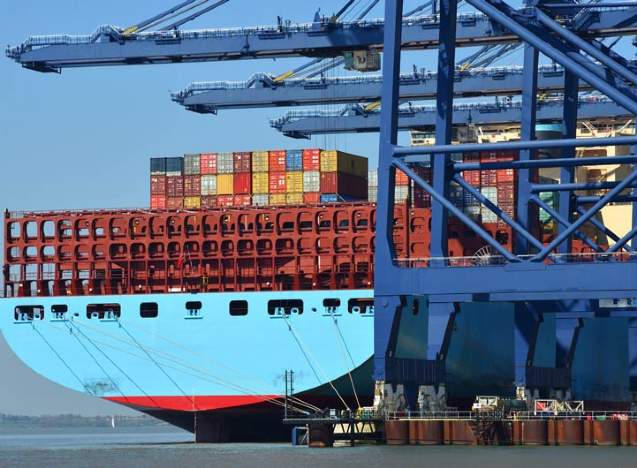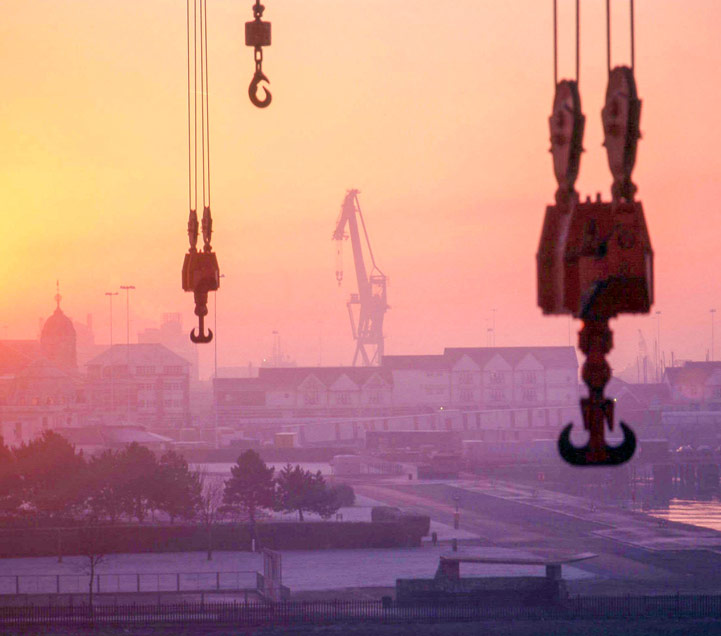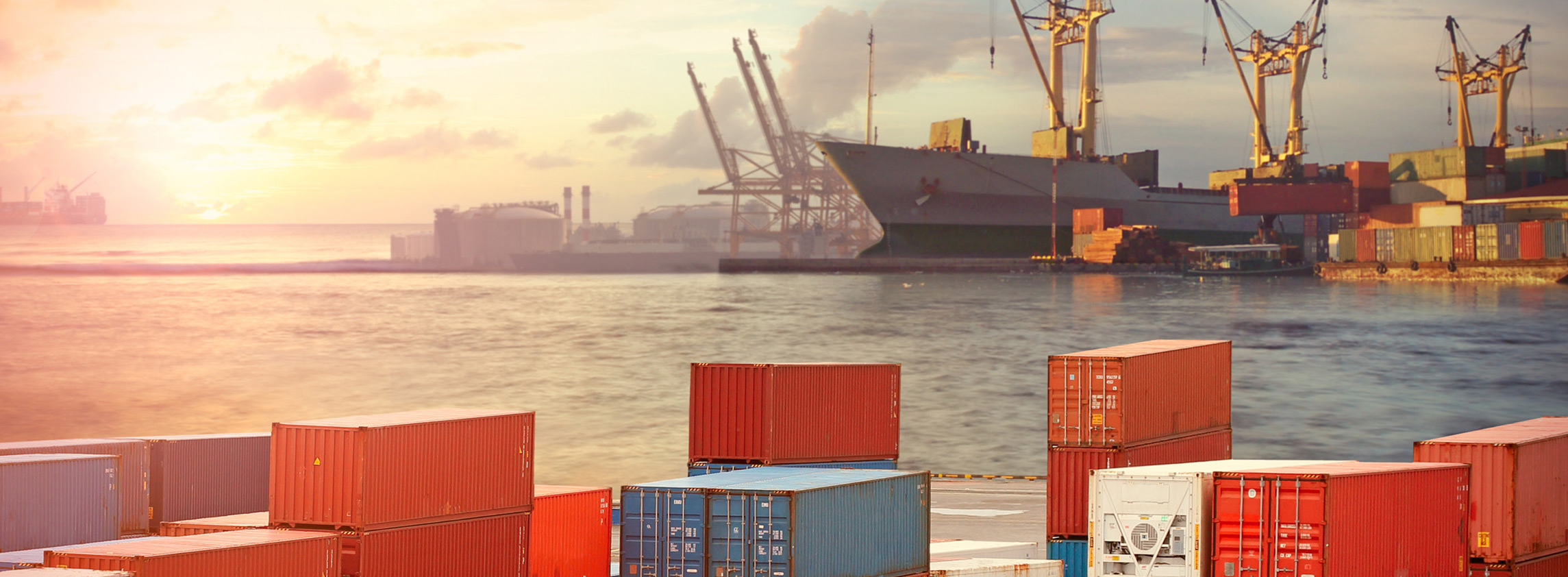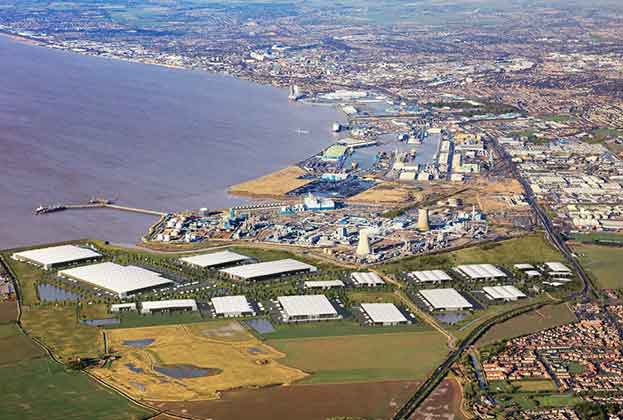According to Michael Carson, Group Commercial Director at Libra Europe Consulting, as the existing supply chain model changes, port-centric logistics is growing in profile
The UK logistics property market has gone through a seismic shift in recent years as the advent of online retail has increased the demand for warehouse space in the UK. The average amount of warehouse space taken on new leases has risen from 15m sq ft per year to 32m sq ft per year, a rise of 113% since 2007.
The UK retail supply chain has evolved over the last three decades as store networks grew, and retailers built their logistics networks in the most efficient way possible. Typically, this would involve taking warehouse space in the centre of the country, otherwise known as the Golden Triangle.
The benefit of this model is that the majority of the population can be reached within a four-hour drive time. Inbound inventory movements are also key to this as product is often imported by container on vehicles from the three major ports of Southampton, Felixstowe and, more recently, London Gateway.
This supply chain model is clearly still relevant today as 2019 has seen 39% of all new warehouse leases taken within the Golden Triangle, the highest year ever recorded and up from 24% in 2008.
Since the turn of the millennium, the concept of port-centric logistics has gained in profile within the supply chain community, driven by a number of high profile retailers such as Tesco and Asda, choosing to locate large distribution centres at port-side locations.
Port-centric logistics allow you to store your shipment at the port thus-reducing the number of handling stages throughout your storage and distribution process, in theory saving both time and money. The concept potentially reduces road miles and empty running of HGVs which also has a direct environmental and commercial benefit.
The disruption associated with Covid-19 has challenged supply chains across the globe. A recent McKinsey survey has revealed that a huge majority of supply chain leaders are planning to increase their supply chain resilience as a result of the pandemic.
McKinsey suggests actions to build resilience include dual sourcing, higher safety stock, nearshoring of suppliers and production and regionalisation. We see this shift towards regional supply chains and nearshoring increasing the role of short sea shipping whilst accelerating the interest in port-centric logistics.
This paper examines the concept of port-centric in greater detail and presents two UK case studies where port-centric logistics has the potential to evolve and change the dynamics of the UK logistics property market.
The last 20 years have seen a dramatic shift in retail as UK consumers have adopted internet shopping on a grand scale. The landscape for businesses has changed with high streets no longer the go-to option for a large section of the UK consumer base and as such the supply chains required to meet this demand have developed accordingly.
Much of the focus in designing these supply chains has been around optimising the ‘Final Mile’ of delivery where, in effect, consumers have driven a huge rise in the need for low volume, multiple drop solutions, a complex and expensive undertaking. Whilst this will remain an area for constant innovation and improvement it is not the only part of the chain that needs updating.
In the UK, logistics has been focussed on the larger retailers Regional Distribution Centres (RDC) and National Distribution Centres (NDC) networks and delivery to large retail stores or centres. This has naturally created a focus around the ‘Golden Triangle’ of Nottingham, Bedford and Kidderminster for warehousing with a huge concentration of retailer, supplier and 3PL facilities.
The emergence of this Golden Triangle of logistics was a logical output of late 20th-century centralisation, providing access to 90% of the UK population, and therefore major retail outlets, within four hours. However, product sitting in these ‘optimally located’ facilities is far from ‘four hours from the consumer’ as there are traditionally two to three further nodes within the supply chain before this product then hits the shelves, let alone consumer.

And then there’s the upstream supply chain to contend with…
The importing of goods to the UK represents around 25% of GDP and, based on data showing the amount of units imported in the last 10 years, over 53% of imported goods landed into south/south-eastern UK ports with Dover and Felixstowe accounting for 19% and 10% respectively followed by London (9%), Southampton (8%), Portsmouth (4%) and Medway (3%).
In a world where goods were sourced at a cheaper unit cost overseas, imported in bulk and shipped to a central distribution centre to be broken down and consolidated into mixed, store-ready loads, this model made reasonable logistical sense. However, the rise in demand for single item fulfilment on a near-instantaneous basis now makes less logistical sense.
If time pressures weren’t enough, the cost and congestion pressures are increasing while the environmental impact of this model is coming under more scrutiny. The split of UK population North to South in relation to the traditional import and UK-centric DC hubs adds further fuel to the fire.
In broad terms, 50% of the UK population is located south of the Golden Triangle. Couple this with the aforementioned ports of entry for a significant portion of UK consumption and the inefficiencies become self-evident.
Therefore, this import to first offload leg of the chain requires some new thinking, whilst less immediate than the obvious pressures for final mile solutions, it undoubtedly presents both a challenge and an opportunity. Currently more than half of freight imported through the southern ports has a final destination north of Birmingham.
So why import to a southern-based port only to transport (primarily by road) to DC’s in the north, on a container-by-container basis?
Road freight four times more damaging environmentally than sea…
On a like-for-like basis, transporting freight from southern UK ports to the north via road is nearly four times more damaging to the environment than the equivalent sea freight shipment (Road: 62g CO2/tonne-km vs Sea: 16g CO2/tonne-km).
The logic is irrefutable, certainly when it comes to servicing the northern UK market. Transporting container-by-container from the South to the North vs. landing thousands of containers directly into the northern market is environmentally and commercially illogical. Not to mention the additional congestion on UK roads caused by road freight vs. sea. Shipping container volume direct to northern ports to service the north consumer base clearly provides a far more environmentally friendly option than the traditional road haulage approach.
Ports such as Hull provide not only a northern entry point into the UK to mitigate the above environment impacts but also offer a plentiful supply of land and labour without the power shortage headaches. Developments to the road networks lead to/from Hull mean five of the UK’s biggest cities are within two and half hours of Hull providing an excellent foundation for a port-centric approach to 21st century importing and fulfilment into the UK.
Transporting container-by-container from the South to the North vs. landing thousands of containers directly into the northern market is environmentally illogical
Michael Carson, LEC
The same approach applies to the London Gateway with the very centre of the UK largest market and over 40% of the UK population within 60 miles of the ports’ doorstep; there is no better place for a port-centric approach to fulfilment in the UK.
Granted, the cost of land and accessibility of labour within London Gateway requires further consideration than its’ northern counterparts; however, the benefits in shortening the supply chain and providing a more efficient method of meeting growing consumer demands are endless.
In addition, rail freight routes may also provide a more environmentally friendly solution for cross UK freight transportation producing 22g CO2/tonne-km, 65% less than road. Ports including London Gateway are uniquely positioned to provide access to the national rail network, offloading containers here and utilising the rail network to transport goods to both the north of UK and the ‘Golden Triangle’ could potentially prove fruitful in efforts to mass distribute.

85.4% of population within four hours…
Reverting to the earlier point of “90% of the UK population being within four hours of the Golden Triangle.” Taking Rugby as a centre point for this long-standing logistics hub, 84.2% of the UK population is within a 170-mile reach (approximately four-hour drive).
When looking at London Gateway and the Port of Hull, the combination of these two ports offers 85.4% of the UK population within 170 miles.
This demonstrates that there are alternative methods for maintaining proximity to end-consumer whilst taking a holistic view at the end-to-end supply chain to maximise overall effectiveness.
Fast-fashion retailers have cottoned on to this thought process in recent years. Albeit via air freight, the majority of their overseas items arrive into Doncaster and the East Midlands. The necessity to shorten the supply chain in order to enhance the ability to react to market trends within the fashion industry has led to this use of air freight.
The subsequent use of northern locations to enable the final leg of this shortened supply chain adds further weight to a different way of thinking when it comes to the use of UK ports for sea freight.
If I were a new entrant distributing into the UK market from overseas…
The traditional solutions would point any new entrant down the legacy route of focussing on the final-mile customer, plumping for a central DC to ‘cover all bases’. However, there are a number of angles by which to challenge this.
Simply take a financial lens to this taking a 500,000 sq ft unit at £6.95 psf in the Golden Triangle would provide a ‘baseline’ rent and rates cost of £4.73m pa. Compare this to splitting the requirements across two sites of c. 250,000 sq ft in London Gateway at £9.50 psf and the Port of Hull at £5.50 psf. On a like-for-like basis, this would yield an 1.72% rent and rates saving, which over the course of a 25-year lease would deliver a saving of just over £2m pa. A two-site model also provides further flexibility in serving the UK market and could yield opportunity to shift the balance of distribution further north leveraging further financial benefit.
Clearly, there is a myriad of other costs to account for including labour and transport, but it is clear to see why a port-centric model appeals from a property perspective alone.
Furthermore, a two-site, port-based model removes at least one node from the supply chain; The implications on flexibility, speed of service and impact on inventory within the overall chain could all prove significant to a number of industries.
The ability to respond to consumer demand upstream will invariably support the ‘final-mile’ dilemma; taking time out of the chain upstream gives further ‘breathing room’ downstream whilst enabling distributors into the UK to optimise their inventory policies with less inertia around the traditional peak and trough nature of importing.
Focus on end-to-end supply chain
Sourcing the right quality of goods at the right cost in container load volumes is relatively easy in the overall supply chain. The complexity arises downstream when fulfilling a growing trend towards single-unit demand in a market that expects it within minutes of closing their app.
Conquering this conundrum requires more than just a focus on the final mile of the supply chain; it requires a closer look at the end-to-end and in particular, the point at which the goods hit UK shores. Ensuring the decoupling of hundreds of containers at the right point, as close to the final customer as possible, is the key to leveraging a cost-effective, environmentally friendlier supply chain.
Applying some lateral thinking thereafter, along with a progressive move away from the traditional approach will deliver both efficiency and effectiveness in meeting consumer demands in the 21st century and beyond.
Impact of free ports
In efforts to boost trade post-Brexit, the UK Government has plans in place to establish up to 10 ‘free ports’. Essentially free ports are designated areas with little to no tax in order to encourage economic activity, whilst geographically located within a country they exist outside its borders for tax purposes. The area allows companies to manufacture, import undertake value add activities and re-export goods free of tariffs deferring payment until their products are moved elsewhere or even avoid them altogether should they bring in goods to store or manufacture on-site before exporting them or ‘importing’ them into the UK.
Varying forms of tariff flexibility and tax measure deployed by the Government would provide incentives for private business investment, whilst carefully considered planning reforms would facilitate construction along with further funding for infrastructure improvements.
The ideal result is that free ports would act as hotbeds of innovation to form business clusters through fostering the conditions that will attract new companies, investors and innovations. This would effectively ‘level up’ local communities by improving productivity within our port regions, increasing employment opportunities, whilst also supporting smoother international trading activity.
Boris Johnson, a free port advocate, claims such ports drive economic growth and provide thousands of high-skilled jobs in left-behind areas. Mace construction group’s independent research suggests free ports could create 150,000 new jobs and add £9 billion a year to the UK economy whilst simultaneously narrowing the north-south divide.
However, these areas where normal tax and customs are heavily softened or don’t apply at all have caused many to claim the areas could facilitate money laundering and tax evasion whilst the rise in tax breaks could cause a loss of revenue for the Treasury.
In addition, while free ports have been praised as a solution for solving regional inequalities, it has been noted that the incentives given by locating in a free port may also promote the relocation of activity from one part of the UK to another exacerbating the problem and mitigating the benefits of free port implementation.
Yet, it seems that with no certainties on the nature of the deal with Europe following our departure, free ports have been identified as a possible solution to keep imports and exports positive for the UK through fostering conditions that will attract new businesses, investors and innovations.
.jpg)
Read the articles within Spotlight: Port-centric Logistics below.


